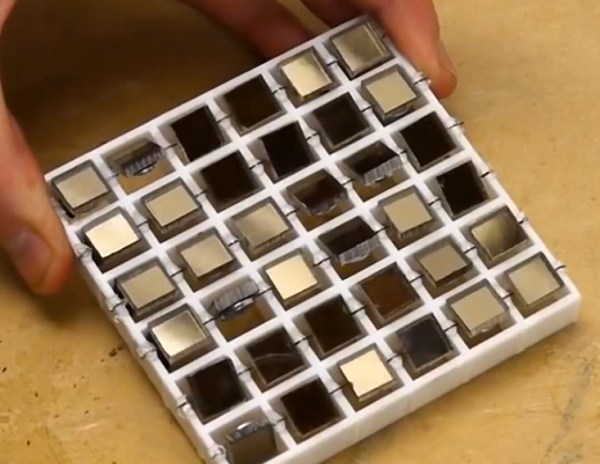Did you know there are a million little mirrors flickering back and forth, reflecting light within some modern projectors; like a flip-dot display but at the micro level? In his video, [Ben Krasnow] explains the tiny magic at work in DLP, or digital light processing technology with a scaled up model he constructed of the moving parts.
LCD projectors work much like old slide projectors. Light is shined through a transparent screen containing the image, which is then focused and enlarged through a lens. DLP projectors however achieve the moving image in a slightly different way. A beam of focused light is shined onto a chip equipped with an array of astonishingly small mirrors. When the mirror is flipped in one direction, it reflects the light out through the lens and creates a visible pixel. When the mirror is tilted the opposite direction, no light is reflected and the pixel is dark. All of these tiny moving parts are actuated by means of static electricity, and since a pixel can effectively only either be in an on or off state without any range of value in-between, the pixel must flutter at a rate fast enough to achieve the illusion of intensity, much like pulsing an LED to create a dimming effect.
In addition to slicing open the protective casing of one of these tiny micro-mirrored chips to give us a look at their physical surface under a microscope, [Ben] also built his own functioning matrix from tiles of mirrors and metal washers sandwiched around pieces of string. A wound electromagnet positioned behind each tile tilts the pixel into position when a current is run through the wire — although he didn’t sink the time needed to build out the full array in this manner (and we don’t blame him). If you do have the time and add in a high powered flash-light, this makes for an awesome way to shine messages on your roommate’s wall.
Continue reading “Digital Light Processing, So Many Tiny Mirrors”










